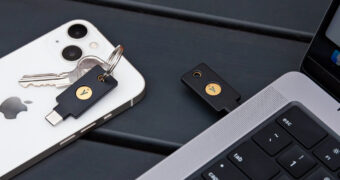Whether you’re just starting an ecommerce business or considering a rebrand, one of the most…
What We Learned From Tony Hawk About Authenticity
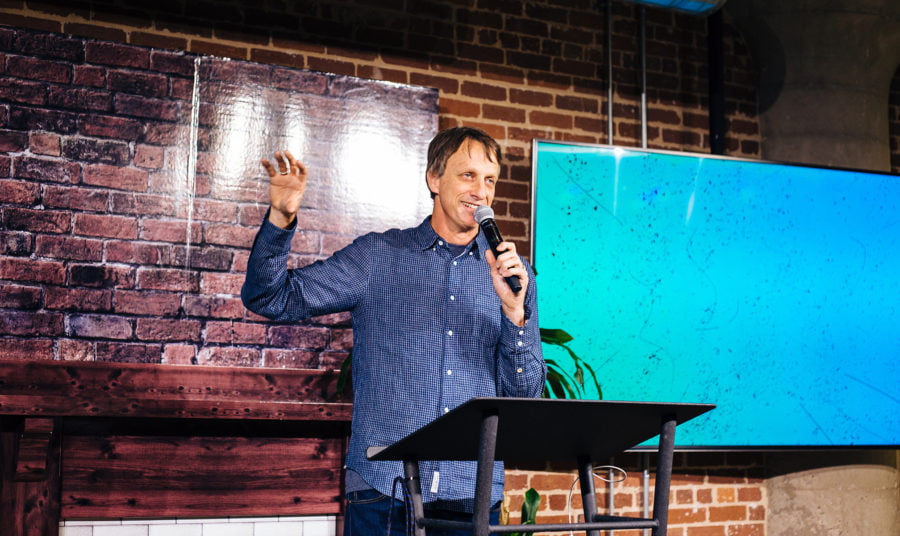
Years ago, when MailChimp was a smaller company, Friday mornings were a time to gather and talk about what’s going on around the office. But now that there are 800 of us, we like to mix it up occasionally. Recently, we did just that by inviting Tony Hawk to our Coffee Hour series.
As an athlete, not only has Tony been a 12-time world champion and 16-time X Games medalist, he invented nearly 100 tricks and became the first skateboarder to complete the 900. But the road to the top wasn’t easy.
“I was still an absolute ghost at school,” he told us on a recent Friday. “It was this weird paradox, because skating just wasn’t that cool. I would hide my board in high school, because I didn’t want to get hassled.”
Here’s what he taught us about what it means to be authentic to yourself:
If at first you don’t succeed…
Tony didn’t have an epiphany the first time he stepped onto a skateboard. In fact, he crashed into a fence so hard, he got splinters on his hands. Tony and his family lived in San Diego, where his older brother would surf. But when the waves were flat, his brother would skate. One day, Tony stepped onto the skateboard, riding down their driveway. Realizing he had no idea how to navigate, he turned to yell, “How do I turn?” before plowing into the barricade. “Angels were not singing, there was no epiphany for me,” Tony says.
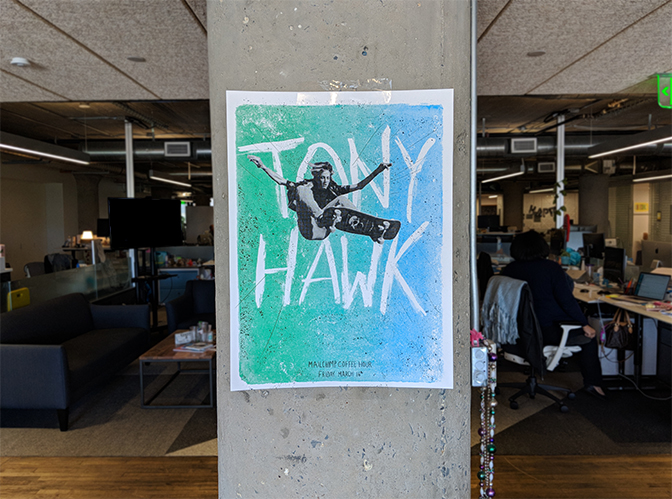
…try, try—and try—again.
Not long after his fateful meeting with the fence, Tony’s neighborhood friends started skating, too. Every so often, someone would build a ramp in their driveway, and the kids would skate on it for hours until it was torn down (or the neighbors got angry). “It felt more like a fad, like pogs or yo-yos or something,” he says.
Though there were a few skate parks in the area, Tony wasn’t old enough to go to the one everyone went to, but he did see people flying out of swimming pools. “That was my moment. That was my epiphany. I was like, “I want to do that. Whatever it takes to get there, I want to do that. I want to fly out of these pools because that looks like they’re defying gravity—and looks like the most fun.”
Always plan for the future.
Things in the skating world started to ramp up and get bigger to the point where Tony was making serious money when he about 17, so his dad convinced him to invest in a house and put money away.
“We were living this dream, but that dream had never existed before, so we were creating the dream,” Tony says.
Don’t forget to be yourself.
As endorsement deals started to pour in, Tony realized he wasn’t being authentic to himself.
“I vowed that if I ever got to do anything in the future, I would keep that control, and keep that authenticity, because it just really was not representative of who I was as a skater,” he says.
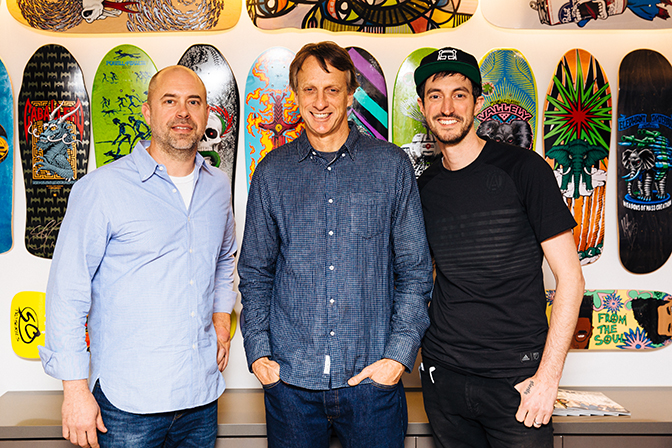
Expect to make a few sacrifices along the way…
“The obvious choice was to start my own skate brand, because skating was at an all-time low, and I thought it was my transition from being a pro skater. I really thought it was like, ‘This is my way to stay in the scene, to do my own thing, start a brand with a bunch of skaters that I respect that I feel would make a really good team.'”
To do so, he had to take a second mortgage out on his house—and eat Taco Bell, Top Ramen, and peanut butter and jelly sandwiches for about 3 years. But he says creating Birdhouse was worth the risk.
“We really did it banking on that skating was cyclical. It had come and gone in fashion a few times, and it was at its lowest point,” he says. “To be established as one of the best brands at that time was not hard, because the back page of the main skate magazine to advertise was $400 or something, and you could talk them down from there.”
…even if it means pursuing an unlikely side hustle.
Then Tony got a got phone call from ESPN. The network wanted to put on an event with skating along with other sports called “Extreme Games.” Held in Rhode Island in 1995, the games featured skateboarding, rollerblading, and bungee jumping.
“It was more of an experiment,” Tony says. “But I knew that if we just entered, if we competed at the event, I felt like our experience and our integrity would shine through the noise and all the silliness of it.”
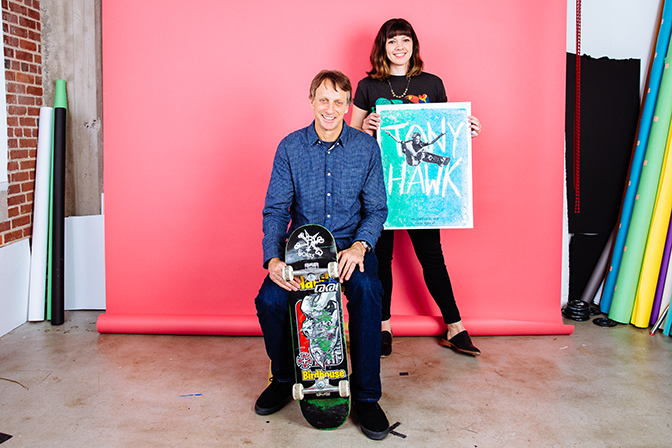
Remember your roots.
Tony even set out to create a foundation to fund more skate parks in low-income areas. When he got the opportunity to be on an episode of celebrity Who Wants To Be a Millionaire?, Tony used the $125,000 he won to start the Tony Hawk Foundation, which has since helped fund almost 600 skate parks that have had more than 6 million visitors.
“To be honest, I’m just happy to still be skating. I’m going to be 50 in May, and to think that I’m still a pro skater, relevant somewhat, at this age, is beyond any dream that I ever had.”
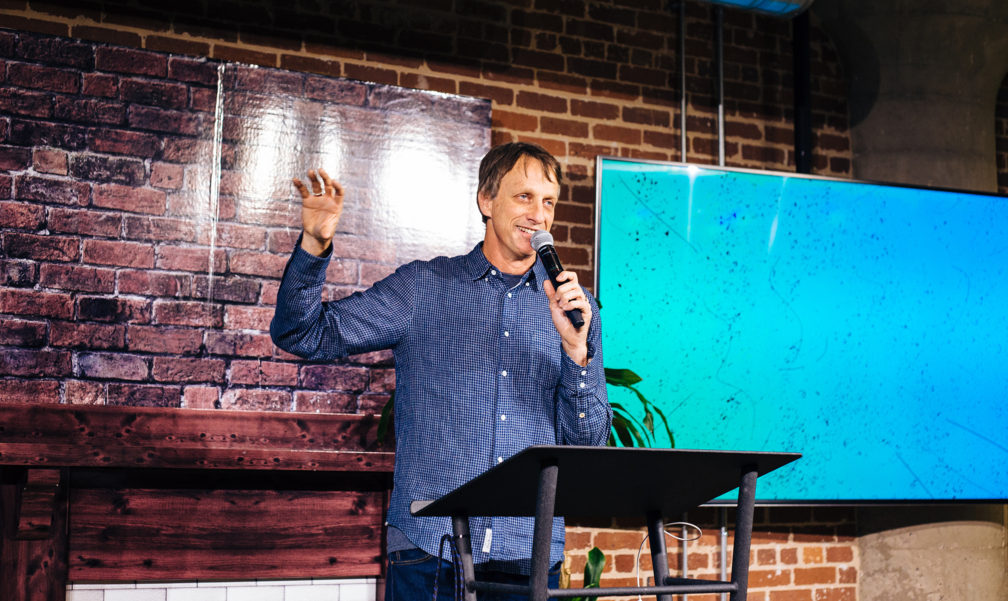
Years ago, when MailChimp was a smaller company, Friday mornings were a time to gather and talk about what’s going on around the office. But now that there are 800 of us, we like to mix it up occasionally. Recently, we did just that by inviting Tony Hawk to our Coffee Hour series.
As an athlete, not only has Tony been a 12-time world champion and 16-time X Games medalist, he invented nearly 100 tricks and became the first skateboarder to complete the 900. But the road to the top wasn’t easy.
“I was still an absolute ghost at school,” he told us on a recent Friday. “It was this weird paradox, because skating just wasn’t that cool. I would hide my board in high school, because I didn’t want to get hassled.”
Here’s what he taught us about what it means to be authentic to yourself:
If at first you don’t succeed…
Tony didn’t have an epiphany the first time he stepped onto a skateboard. In fact, he crashed into a fence so hard, he got splinters on his hands. Tony and his family lived in San Diego, where his older brother would surf. But when the waves were flat, his brother would skate. One day, Tony stepped onto the skateboard, riding down their driveway. Realizing he had no idea how to navigate, he turned to yell, “How do I turn?” before plowing into the barricade. “Angels were not singing, there was no epiphany for me,” Tony says.

…try, try—and try—again.
Not long after his fateful meeting with the fence, Tony’s neighborhood friends started skating, too. Every so often, someone would build a ramp in their driveway, and the kids would skate on it for hours until it was torn down (or the neighbors got angry). “It felt more like a fad, like pogs or yo-yos or something,” he says.
Though there were a few skate parks in the area, Tony wasn’t old enough to go to the one everyone went to, but he did see people flying out of swimming pools. “That was my moment. That was my epiphany. I was like, “I want to do that. Whatever it takes to get there, I want to do that. I want to fly out of these pools because that looks like they’re defying gravity—and looks like the most fun.”
Always plan for the future.
Things in the skating world started to ramp up and get bigger to the point where Tony was making serious money when he about 17, so his dad convinced him to invest in a house and put money away.
“We were living this dream, but that dream had never existed before, so we were creating the dream,” Tony says.
Don’t forget to be yourself.
As endorsement deals started to pour in, Tony realized he wasn’t being authentic to himself.
“I vowed that if I ever got to do anything in the future, I would keep that control, and keep that authenticity, because it just really was not representative of who I was as a skater,” he says.

Expect to make a few sacrifices along the way…
“The obvious choice was to start my own skate brand, because skating was at an all-time low, and I thought it was my transition from being a pro skater. I really thought it was like, ‘This is my way to stay in the scene, to do my own thing, start a brand with a bunch of skaters that I respect that I feel would make a really good team.'”
To do so, he had to take a second mortgage out on his house—and eat Taco Bell, Top Ramen, and peanut butter and jelly sandwiches for about 3 years. But he says creating Birdhouse was worth the risk.
“We really did it banking on that skating was cyclical. It had come and gone in fashion a few times, and it was at its lowest point,” he says. “To be established as one of the best brands at that time was not hard, because the back page of the main skate magazine to advertise was $400 or something, and you could talk them down from there.”
…even if it means pursuing an unlikely side hustle.
Then Tony got a got phone call from ESPN. The network wanted to put on an event with skating along with other sports called “Extreme Games.” Held in Rhode Island in 1995, the games featured skateboarding, rollerblading, and bungee jumping.
“It was more of an experiment,” Tony says. “But I knew that if we just entered, if we competed at the event, I felt like our experience and our integrity would shine through the noise and all the silliness of it.”

Remember your roots.
Tony even set out to create a foundation to fund more skate parks in low-income areas. When he got the opportunity to be on an episode of celebrity Who Wants To Be a Millionaire?, Tony used the $125,000 he won to start the Tony Hawk Foundation, which has since helped fund almost 600 skate parks that have had more than 6 million visitors.
“To be honest, I’m just happy to still be skating. I’m going to be 50 in May, and to think that I’m still a pro skater, relevant somewhat, at this age, is beyond any dream that I ever had.”
Original article written by Kasia >





